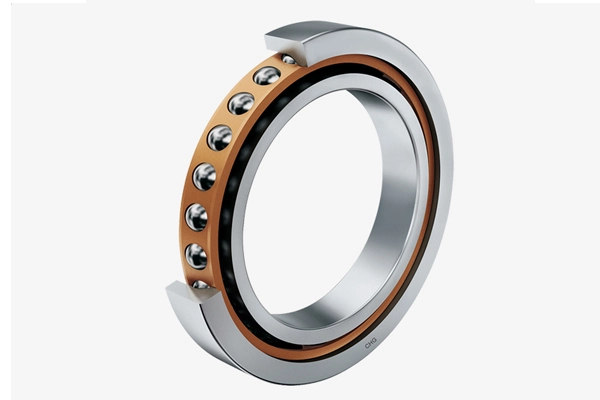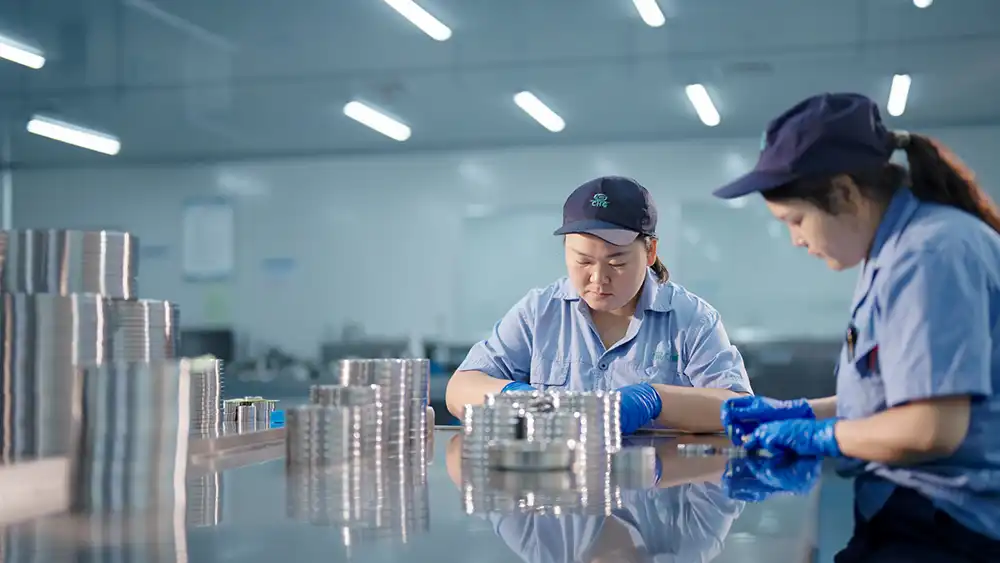What are the Key Features of Precision Angular Contact Ball Bearings?
Precision angular contact ball bearings represent a sophisticated advancement in bearing technology, specifically engineered to handle combined radial and axial loads with exceptional accuracy. These bearings are distinguished by their unique contact angle design, which allows for optimal load distribution and enhanced performance in high-precision applications. The raceways of the inner and outer rings are displaced relative to each other in the bearing axis direction, creating an intricate geometry that enables these bearings to excel in applications requiring both speed and precision, such as machine tool spindles, aerospace equipment, and high-performance automotive systems.

How Do Angular Contact Ball Bearings Differ from Other Bearing Types?
Angular contact ball bearings stand apart from other bearing types through several distinctive characteristics that make them invaluable in precision applications. The primary differentiating factor lies in their internal geometry, specifically the contact angle between the balls and raceways. Unlike radial ball bearings, which are primarily designed to handle radial loads, angular contact bearings feature raceways that are displaced relative to each other along the bearing axis, creating an angle between the line of force transmission through the balls and a perpendicular to the bearing axis.
This unique design enables these bearings to handle combined loads - both radial and axial forces - more effectively than other bearing types. The contact angle, typically ranging from 15 to 40 degrees, determines the bearing's ability to handle axial loads. Higher contact angles generally provide better axial load capacity but may result in reduced radial load capacity and speed capabilities. The selection of the appropriate contact angle depends on the specific application requirements and operating conditions.
Furthermore, these bearings often incorporate higher precision grades and superior surface finishes compared to standard bearings. The manufacturing tolerances are significantly tighter, with particular attention paid to raceway geometry, ball roundness, and cage design. This precision extends to the materials used, with many angular contact bearings featuring ceramic balls or hybrid designs that combine ceramic balls with steel rings for enhanced performance at high speeds.
The preload capability of angular contact bearings also sets them apart. These bearings can be manufactured and assembled with various degrees of preload, which helps eliminate internal clearance and increases system rigidity. This feature is particularly crucial in applications where precise positioning and minimal shaft deflection are required, such as in machine tool spindles and precision measuring equipment.
What Are the Primary Applications and Installation Requirements?

The versatility and precision of angular contact ball bearings make them indispensable in a wide range of sophisticated applications. In the machine tool industry, these bearings are the preferred choice for high-speed spindles where precision, rigidity, and thermal stability are paramount. The aerospace sector relies heavily on these bearings for aircraft engines, control surface actuators, and navigation systems, where reliability and performance under extreme conditions are essential.
Installation requirements for these bearings demand meticulous attention to detail and precise execution. The mounting procedure must account for several critical factors, including shaft and housing fits, alignment, preload setting, and lubrication requirements. The bearing seats must be manufactured to specific tolerance ranges to ensure proper fit and function. Surface finish requirements are typically more stringent than those for standard bearings, with particular attention paid to roundness and cylindricity.
Temperature management during installation is crucial, as thermal expansion can significantly impact bearing performance. Many installations require controlled heating of the bearing or housing to achieve proper fits without damaging the components. The preload setting, which is critical for optimal performance, must be carefully controlled during installation. This may involve using specialized tools and measurement equipment to ensure the correct preload is achieved.
Proper lubrication is another critical installation requirement. The lubricant type, quantity, and method of application must be carefully selected based on the application requirements. High-speed applications often require oil-air lubrication systems or specialized grease formulations to ensure adequate lubrication while minimizing heat generation.
What Factors Influence the Performance and Lifespan of These Bearings?
The performance and longevity of precision angular contact ball bearings are influenced by a complex interplay of various factors that must be carefully considered during design, installation, and operation. Operating speed is a critical factor that affects both performance and lifespan. As speeds increase, centrifugal forces on the balls become more significant, potentially affecting the contact angle and load distribution. This can lead to increased heat generation and potentially reduced bearing life if not properly managed.
Load conditions, including both magnitude and direction, significantly impact bearing performance. While these bearings are designed to handle combined loads, the ratio between radial and axial loads must be within designed parameters for optimal performance. Excessive loads or improper load combinations can lead to premature failure or reduced precision. The dynamic behavior of the application, including vibration and shock loads, must also be considered in predicting bearing life.
Environmental conditions play a crucial role in bearing performance and longevity. Temperature fluctuations can affect bearing clearance and preload, potentially compromising precision and performance. Contamination, even at microscopic levels, can significantly impact bearing life. This necessitates proper sealing solutions and maintenance procedures to protect the bearing from environmental contaminants.
Lubrication quality and maintenance practices are paramount in ensuring optimal bearing performance and maximum service life. The lubricant must maintain its properties under operating conditions while providing adequate film thickness to prevent metal-to-metal contact. Regular monitoring of lubricant condition and timely replacement or replenishment is essential for maintaining bearing performance.
Material selection and manufacturing quality also significantly influence Precision Angular Contact Ball Bearing performance and lifespan. Advanced materials such as ceramic balls or specialized steel alloys can enhance performance under specific operating conditions. The precision of manufacturing, including raceway geometry, surface finish, and ball grade, directly affects bearing accuracy and durability.

Luoyang Huigong Bearing Technology Co., Ltd. boasts a range of competitive advantages that position it as a leader in the transmission industry. Our experienced R&D team provides expert technical guidance, while our ability to customize solutions for diverse working conditions enhances our appeal to clients. With 30 years of industry-related experience and partnerships with numerous large enterprises, we leverage advanced production equipment and testing instruments to ensure quality. Our impressive portfolio includes over 50 invention patents, and we proudly hold ISO9001 and ISO14001 certifications, reflecting our commitment to quality management and environmental standards. Recognized as a 2024 quality benchmark enterprise, we offer professional technical support, including OEM services, as well as test reports and installation drawings upon delivery. Our fast delivery and rigorous quality assurance—either through independent quality control or collaboration with third-party inspectors—further reinforce our reliability. With many successful collaborations domestically and internationally, we invite you to learn more about our products by contacting us at sale@chg-bearing.com or calling our hotline at +86-0379-65793878.
References:
1. SKF Precision Bearings Catalogue (2023). "Technical Specifications and Installation Guidelines"
2. NSK Technical Report (2022). "Advanced Bearing Technologies for High-Speed Applications"
3. Schaeffler Group Technical Journal (2023). "Innovation in Angular Contact Ball Bearing Design"
4. JTEKT Corporation Research Publication (2022). "Performance Analysis of Precision Bearings"
5. Timken Company Engineering Manual (2023). "Precision Bearing Selection and Maintenance"
6. ABMA Technical Paper Series (2022). "Standards for Super-Precision Angular Contact Ball Bearings"
7. Journal of Tribology (2023). "Impact of Material Selection on Bearing Performance"
8. International Journal of Mechanical Engineering (2022). "Optimization of Bearing Preload in High-Speed Applications"
9. IEEE Transactions on Industrial Applications (2023). "Advanced Lubrication Systems for Precision Bearings"
10. Machine Design Magazine (2023). "Trends in Precision Bearing Technology"

